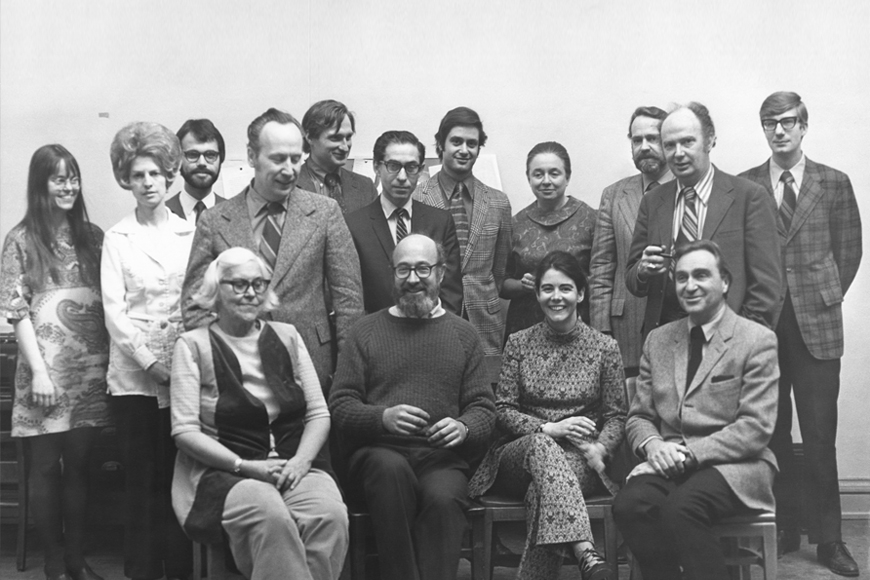History of the Department

It seems fitting that it was in 1929, at the start of the Great Depression, the young architectural historian Everard Upjohn (1904–1978) joined the faculty of the University of Minnesota and helped to found the Department of Fine Arts. Since its beginnings, faculty and students in the department have sought to understand the human impulse to make art, especially in moments of historical, economic, and political upheaval.
Throughout its nearly 90-year history, the department has maintained strong relationships with artists, archaeologists, architectural historians, classicists, and cultural theorists on campus, as well as with museum professionals in the Twin Cities and the surrounding region. The only PhD-granting art history program in the state, it has long been the preeminent source of expertise and the training of scholars, teachers, and curators.
The graduate program in art history was established in 1940, under the direction of Dr. Laurence Schmeckebier (1909–1985), a German scholar trained in Munich who was a specialist in Medieval, Renaissance/Baroque, and Latin American art history. His handbook of Italian Renaissance painting was published in 1939.
The first student to earn a PhD in art history at Minnesota was Catherine Billings in 1948.
The Department of Art was established in the College of Liberal Arts in 1947, including both studio art and art history, with H. H. Arnason (1909–1986) as chairman. Arnason—author of the famous text History of Modern Art: Painting, Sculpture, Architecture, which is now in its seventh edition—also served as director of the Walker Art Center from 1951–1961.
In 1964 the Department of Art split into two: studio art and art history, with Carl Sheppard as art history’s first chairman. Sheppard was a scholar of Romanesque, Byzantine, and early Christian art, and the Center for Medieval Studies at Minnesota still holds an annual lecture in his name.
The department has long welcomed faculty with diverse research and teaching interests including the histories of painting, sculpture, and architecture, the history of craft and design, material cultural studies, prints, and print culture, popular culture, film, photography, ceramics. museology, and new media. Maintaining a global focus since its inception, art history scholars at Minnesota have studied visual cultures in Europe, North, South, and Central America, South Asia, East Asia, and the Near East.
Today the program takes pride in its diverse methodologies and focus on international cultural exchange and globalization in the late antique, early modern, modern, and contemporary periods. Areas of faculty interest include:
- the ethical and logistical problematics of digital archives in and about South Asia
- Orientalism, Japonisme, Primitivism, and the visual culture of new imperialism
- military and diplomatic exchanges between the Ottoman, Safavid, and Mughal courts in the 16th–17th centuries
- the expansion of print culture in the circum-Atlantic in the early modern period
- Italy and Spain in the Golden Age
- modernism, technology and American imperialism
- contemporary Mexican ceramics
-
the global contemporary art market